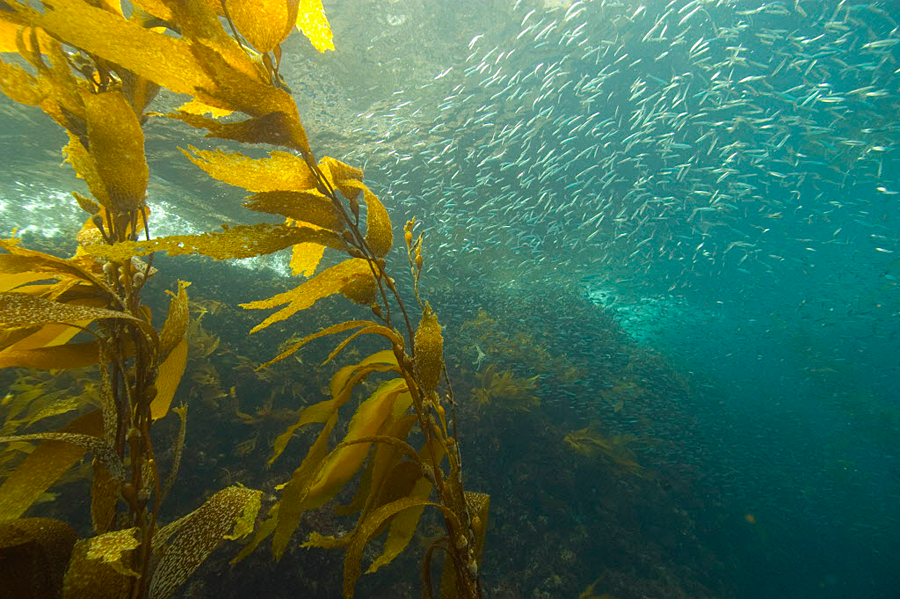Death of Australia's other great reef a troubling sign for world's kelp forests
Loading...
Alarms sounded across the world when marine scientists discovered in April that more than 90 percent of the Great Barrier Reef, the world’s largest reef, had bleached. As the scientific community, the Australian government, and even President Obama placed calls to action to save one of the Earth’s great natural wonders, the death of the country’s other reef, the 1,400-mile Great Southern Reef, went unnoticed.
Nearly all of the kelp forests along about 62 miles of coastline off western Australia have become extinct following a heat wave in 2011 that killed 43 percent of kelp there, according to a study published Friday in the journal Science. And five years later, there are no signs of recovery, said the study’s lead author, Thomas Wernberg of the University of Western Australia’s Ocean Institute, in a statement.
The extinction of the expanse of kelp forests in the northwest tip of the reef shows the sensitivity of the ecosystem, and demonstrates how a slight rise in water temperatures (4 degrees F) can turn an underwater forest, teeming with life, into a desert of turf seaweed. Because the temperature of the Indian Ocean, the current of which flows south to the Great Southern Reef, is warming twice as fast as the rest of the world’s waters, the demise of the ecosystem also foreshadows the effect a further rise in water temperatures could have on kelp forests around the world, including in Japan and Europe.
“They have provided alarming and detailed evidence for one of the most dramatic climate-driven ecosystem shifts ever recorded,” Adriana Verges, a marine ecologist at the University of New South Wales, said of the study.
As The Atlantic’s Ed Yong writes, the ocean will only get hotter, and extreme events like the 2011 heat wave will become more common. “The kelps will recede further southwards until they can’t any more. Kelps need to fasten themselves to rocks, and at some point, ‘they’ll run out of habitat,’ says Wernberg. ‘There’ll be no rock, just deep water until you get to Antarctica. We’ll likely see local extinctions over large areas.”
The Great Southern Reef is composed of a system of rocky reefs that stretch more than 1,400 miles, from Brisbane in eastern Australia to Kalbarri above Perth in western Australia. The forests, whose seaweed branches extend to the surface like trees, are a global diversity hotspot, with 30 to 80 percent of species there not found anywhere else in the world.
The reef’s rock lobster and abalone fisheries also bring in four times the wealth of all the commercial fishing combined in the Great Barrier Reef, according to The Atlantic.
In fact, Wernberg and his colleagues estimate the Great Southern Reef, and the coastal communities that depend on it, contribute $10 billion to the Australian economy each year, compared to $4 billion the Great Barrier Reef contributes in tourism. But warmer temperatures have placed the ecosystem and the industries that depend on it in jeopardy.
The heat wave in 2011 destroyed 43 percent of kelp in western Australia, and was followed by warmer-than-normal temperatures in 2012 and 2013. The end result was the extinction of 90 percent of the kelp along about 62 miles of reef off western Australia. Without these marine forests, the fishes, invertebrates, and other ocean plants that depend on them disappeared too. Turf seaweed, normally found in warmer waters, and bottom-grazing tropical herbivores, such as parrotfish and rabbitfish, took over. These seaweed-eating tropical fish consume any kelp that starts to re-grows at an alarming rate, Wernberg and his team found.
For now, kelp forests further south along the reef are healthier, though Wernberg is concerned that more heat waves will continue to push the destruction southward. Scientists can mitigate the effects of warmer water, however, by controlling factors such as sewage run-offs, which weaken kelp, reported The Atlantic.
Other marine scientists, meanwhile, see hope in the resiliency other kelp forests, particularly in Tasmania, showed this past year. The El Nino phenomenon that brought the longest and hottest heat wave on record off the east coast of Tasmania resulted in mass oyster deaths but, surprisingly, not a major loss of kelp, according to the Guardian.
Perhaps southern kelp forests can better withstand heat waves than northern kelp forests, Craig Johnson, a professor at the University of Tasmania’s Institute for Marine and Antarctic Studies, told the Guardian. The remaining species there can grow up to a foot from morning to lunchtime, he said.







